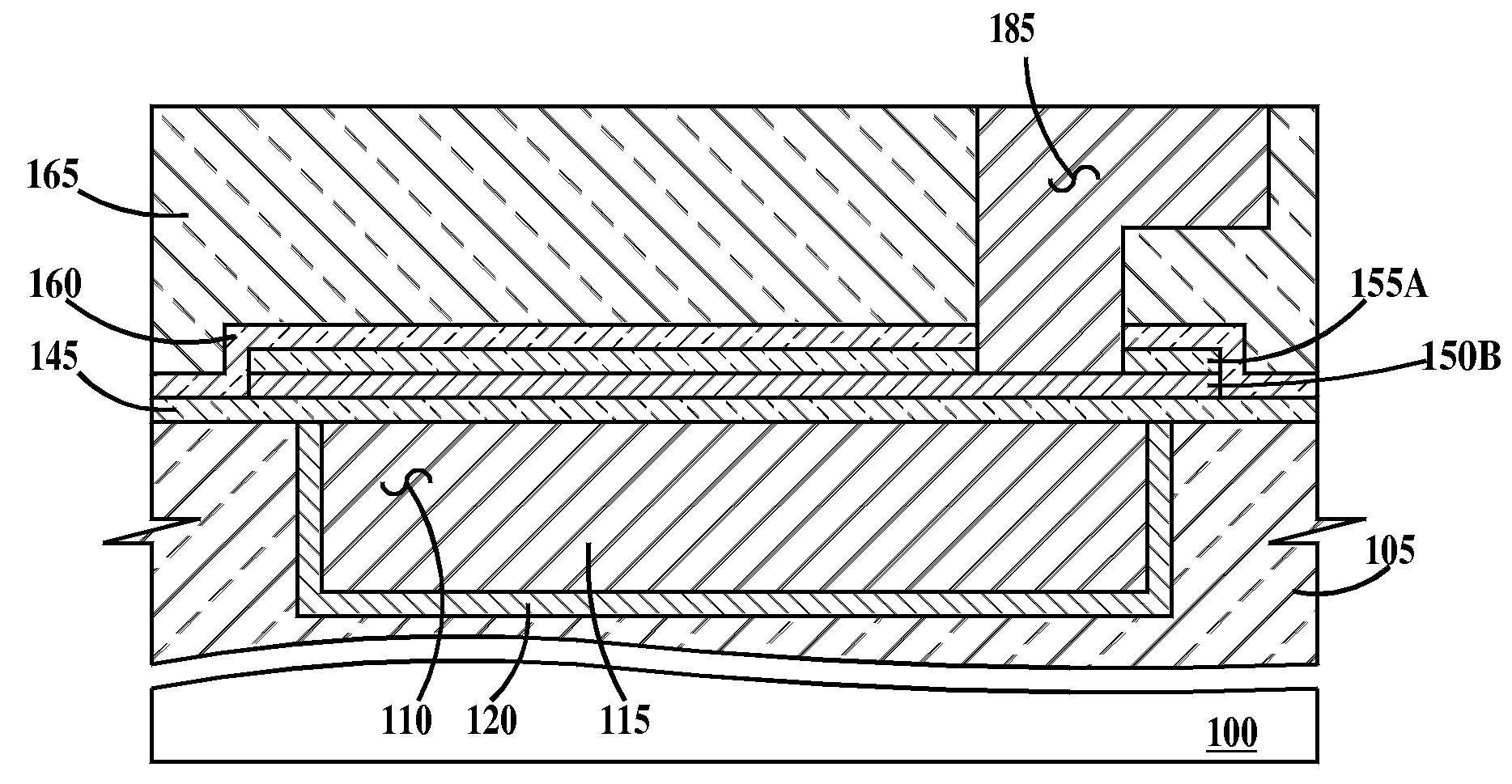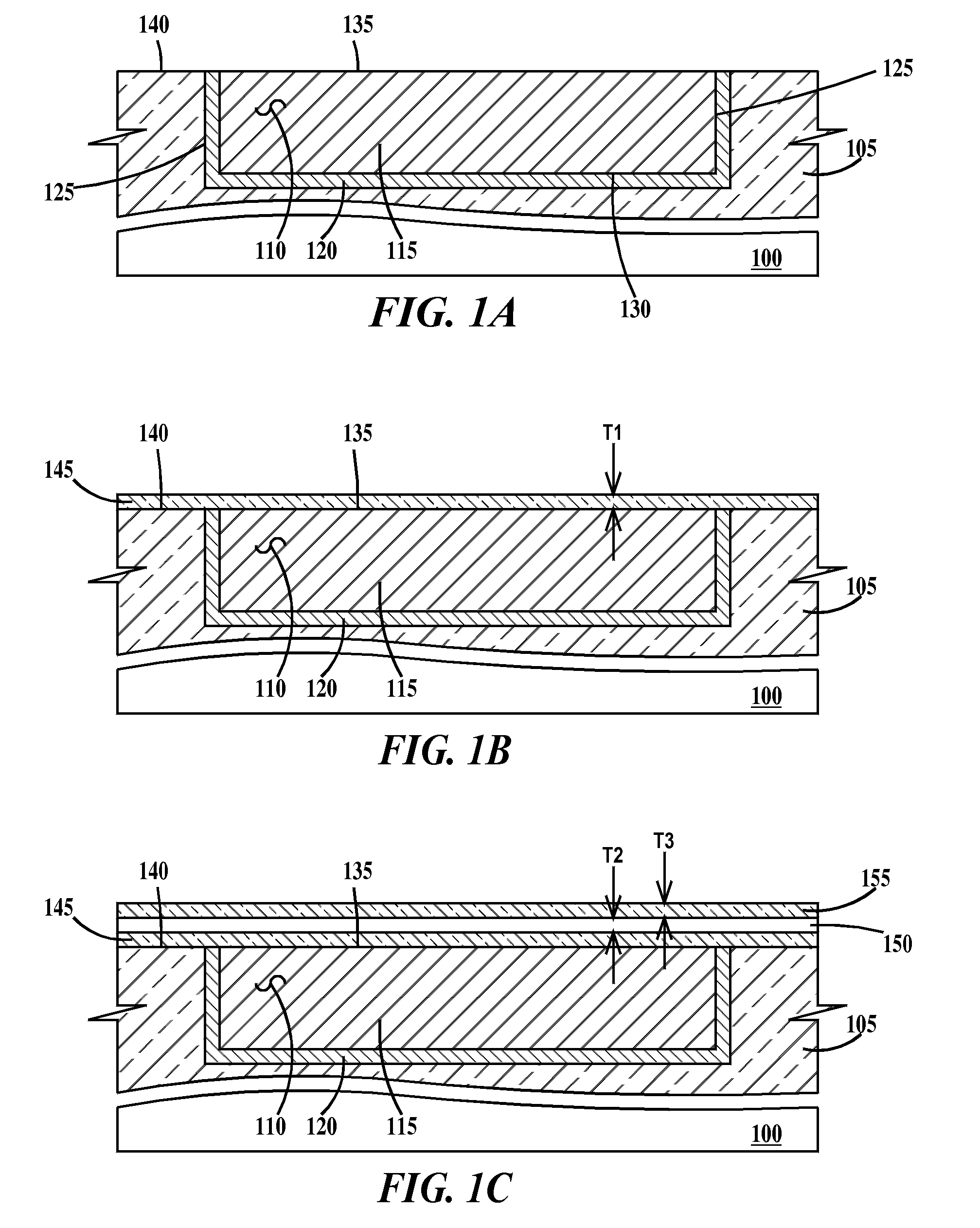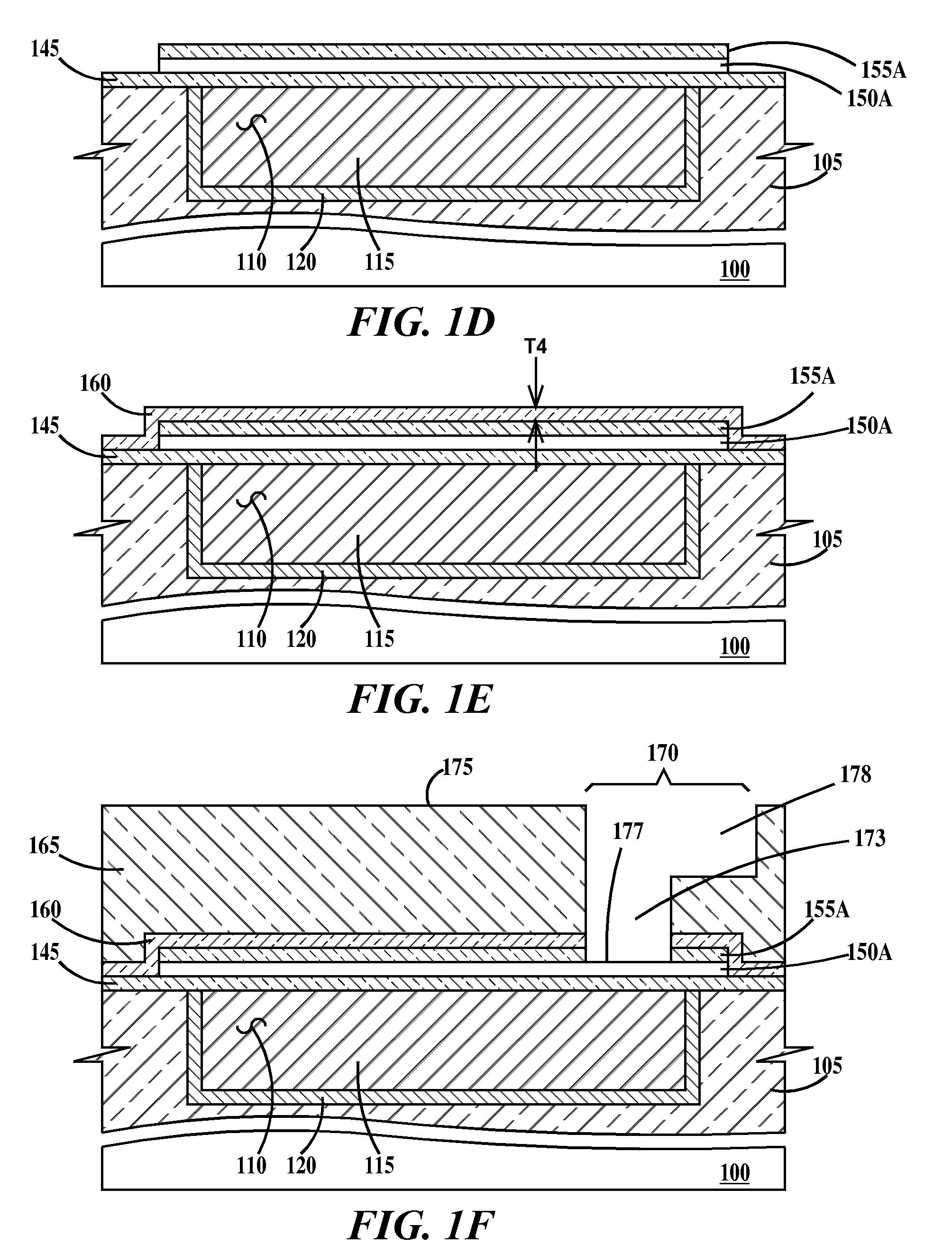Method of forming a metal silicide layer, devices incorporating metal silicide layers and design structures for the devices
- Summary
- Abstract
- Description
- Claims
- Application Information
AI Technical Summary
Problems solved by technology
Method used
Image
Examples
first embodiment
[0012]FIGS. 1A through 1I are cross-sectional drawings illustrating formation of a silicide layer and a capacitor according to present invention. In FIG. 1A, formed on a substrate 100 is a dielectric layer 105. Formed in dielectric layer 105 is a wire 110. Wire 110 comprises a core conductor 115 and an optional electrically conductive liner 120 formed on sidewalls 125 and a bottom surface 130 of wire 110. A top surface 135 of wire 110 is substantially coplanar with a top surface 140 of dielectric layer 105. In the example of FIG. 1A, wire 110 is a damascene formed by a damascene process (or dual damascene formed by a dual damascene process) wire.
[0013]A damascene process is one in which wire trenches or via openings are formed in a dielectric layer, an electrical conductor of sufficient thickness to fill the trenches is deposited on a top surface of the dielectric, and a chemical-mechanical-polish (CMP) process is performed to remove excess conductor and make the surface of the cond...
second embodiment
[0027]FIGS. 3A through 3I are cross-sectional drawings illustrating formation of a silicide layer and a capacitor according to present invention. FIG. 3A is similar to FIG. 1A except an additional wire 110A is formed in dielectric layer 105. Wire 110A is similar to wire 110 and comprises a core conductor 115A and an optional electrically conductive liner 120A. Wire 110A comprises the same materials as describes supra for wire 110. Wires 110 and 110A are advantageously formed simultaneously and comprise the same materials. A top surface 135A of wire 110A is substantially coplanar with top surface 140 of dielectric layer 105. In the example of FIG. 3A, wire 110A is a damascene formed by a damascene process (or dual damascene formed by a dual damascene process) wire.
[0028]In FIG. 3B, a first capping layer 145A is formed on top surface 135 of wire 110, top surface 135A of wire 110A and top surface 140 of dielectric layer 105. First capping layer 145A has a thickness T5. In one example, ...
PUM
 Login to View More
Login to View More Abstract
Description
Claims
Application Information
 Login to View More
Login to View More - R&D
- Intellectual Property
- Life Sciences
- Materials
- Tech Scout
- Unparalleled Data Quality
- Higher Quality Content
- 60% Fewer Hallucinations
Browse by: Latest US Patents, China's latest patents, Technical Efficacy Thesaurus, Application Domain, Technology Topic, Popular Technical Reports.
© 2025 PatSnap. All rights reserved.Legal|Privacy policy|Modern Slavery Act Transparency Statement|Sitemap|About US| Contact US: help@patsnap.com



